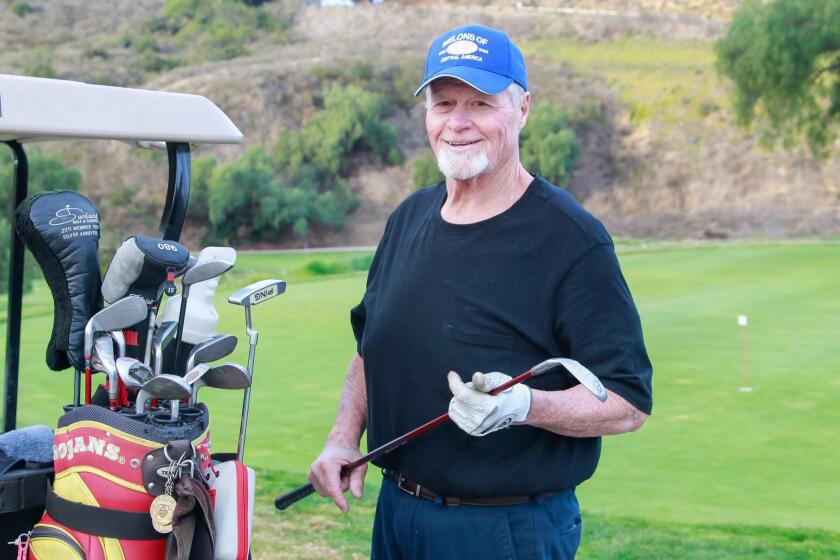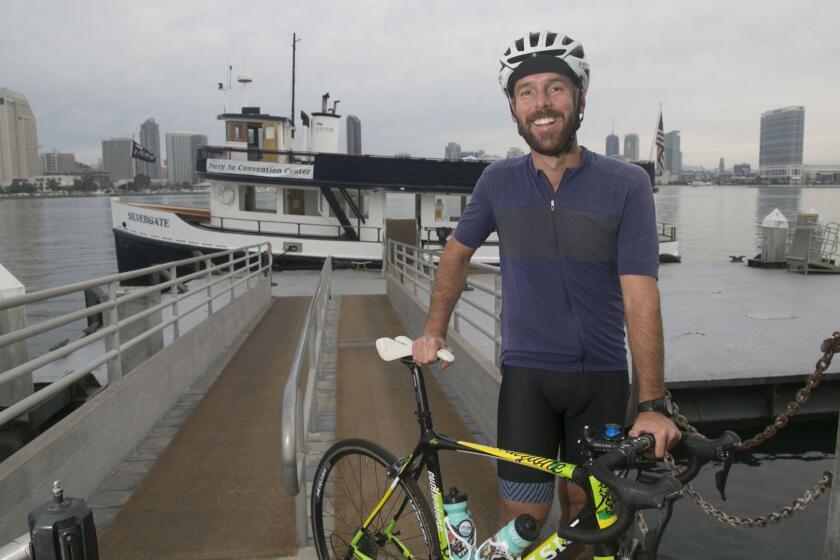Core strength is key to flexibility, stability
Sure, it’s nice to have six-pack abs. They look marvelous and they may even be useful if you’re a linebacker or an actor with a starring role in the next superhero flick.
But for those of us negotiating daily life, core strength and flexibility are probably much more valuable than a washboard physique. And, says Cris Dobrosielski, a longtime strength and conditioning coach, fitness instructor and certified personal trainer in San Diego, you can have core strength without the chiseled abdominals of an underwear model.
“Abdominal strength is great, but that’s largely one set of muscles, at most a couple of sets,” says Dobrosielski, a spokesman for the American Council on Exercise, based in San Diego. “But when we think about the core, we think of a three-dimensional area from the upper thigh to just below your chest.”
It’s the connecting region between the lower and upper body — including the abdominals, the pelvis, the gluteals, lower- and mid-back muscles and hips — that’s key to our ability to move through daily tasks, maintain good posture, prevent back strain and aid with balance.
Upper-body strength is important, too, as is fitness in the legs. But core strength often is overlooked, says Dobrosielski, even though it’s key to so many daily tasks.
Lifting a heavy carry-on bag into the overhead bin on your next flight — without dropping it on someone’s head or hurting your back while raising it and twisting in an awkward stance — can be a test for someone lacking core strength.
Doing exercises to strengthen core muscles provides stability and a measure of injury prevention, says Dobrosielski, whose book, “Going the Distance: The Three Essential Elements of Optimal Lifelong Fitness and Injury Prevention,” was published in 2013.
“The most significant thing is it provides stability,” he says. “Having a strong core, midsection, provides stability for your back. That’s a huge one. That becomes useful if you’re training for sports. It becomes useful if you’re bending over and picking up kids. It’s useful if you’re carrying groceries, if you’re gardening, if you’re sweeping a floor. Vacuuming and sweeping might be the two hardest things on the lower back. So having that strong core, the No. 1 thing I would say is it really provides a strong framework of stability for the back.”
A recent article in the Harvard Medical School publication Healthbeat called the core muscles “the sturdy central link in a chain connecting your upper and lower body.” It noted that core strength helps prevent falls. Balance is aided because the muscles are strong and flexible enough in the midsection to keep that chain working efficiently. Core muscles can adjust almost automatically to keep the body in better position after a misstep or slip.
Todd Astorino, a professor of exercise physiology in the kinesiology department at Cal State San Marcos, says maintaining core strength is important, particularly as we get older, to protect the back and allow us to keep doing the activities and movements we want or need to do.
“Back pain is just so common in a large set of adults,” he says. “That leads to lack of function, disability, et cetera, which can reduce quality of life. So in that case, if your core isn’t strong or isn’t adequate, that would diminish your health.”
Getting stronger
Exercises for core strength and flexibility can be simple, with no special equipment or trips to the gym necessary (though specific equipment and weightlifting can help). Plus, says Astorino, being regularly active and generally fit will maintain or slow the loss of core strength as we age.
Certain full-body sports or exercises — such as swimming, yoga and pilates — are terrific for the core.
“Swimming is a magnificent exercise, across all age groups,” says Dobrosielski. “All kinds of strokes. There is not only a full-body experience, but there is really a tremendous amount of muscular requirements of rotation … through the midsection and shoulders as well as the stabilizing and bracing that occurs as you keep your body even in water.”
Old-fashioned sit-ups and crunches can be OK for building abdominal strength, but they don’t necessarily engage many of the other muscles in that “three-dimensional” region, Dobrosielski says. Among the exercises he suggests as being good for the core, because they work multiple muscle groups:
Plank: Get down on the floor as if you were going to do a push-up. Rest your upper body on your elbows (with your hands forward) and your lower body on your toes, while keeping your body straight and parallel to the floor. Hold the position for just 10-20 seconds to start, but do several sets. You can increase the length and number of sets as you get better.
Side plank: Get down on the floor, but rest on one side with your feet together. Lift your upper body on one elbow with the hand out in the direction you are facing. Keep your body rigid with your legs, hips and chest in a straight line off the floor.
The bird dog: Get down on all fours with your hands flat below your shoulders and your knees in line with your hips. While keeping your head down and your neck and back in a straight line with your hips, raise your right arm straight forward, palm down; at the same time, extend your left leg straight out behind, keeping it parallel to the ground. Hold for five seconds, then switch arms/legs. Do several sets. Dobrosielski says this is great for the muscles along the spine.
The bridge: This can be done on a soft surface, like a bed, or the floor. Lay on your back with your knees bent and your feet flat on the ground, with your neck relaxed. Tighten your stomach muscles and raise your hips to create a straight line from the knees to the hips and torso to the shoulders on the floor. Hold the position for a few seconds, then slowly lower your hips to the floor. Repeat.
Not everyone can do all of these exercises. Some older people especially have trouble getting down on the floor (and back up). And anyone with back problems should always check with his or her doctor before trying something new. But for most adults, these are simple exercises that can be done at home.
“Gosh, if people did these things for five minutes a day, three days a week, that would be great,” says Dobrosielski. “You can start with small increments, and as you get better you increase the frequency and the number of reps and the times per week.”
Having a strong and flexible core, says Astorino, can keep us moving without restrictions.
“Day-to-day tasks, especially where you have to lift and turn, like you would as you take groceries out of your car, those are things that require core strength,” he said. “If that is really weak, that could lead to a strain.”
Williams is a San Diego freelance writer.
Get U-T Arts & Culture on Thursdays
A San Diego insider’s look at what talented artists are bringing to the stage, screen, galleries and more.
You may occasionally receive promotional content from the San Diego Union-Tribune.










